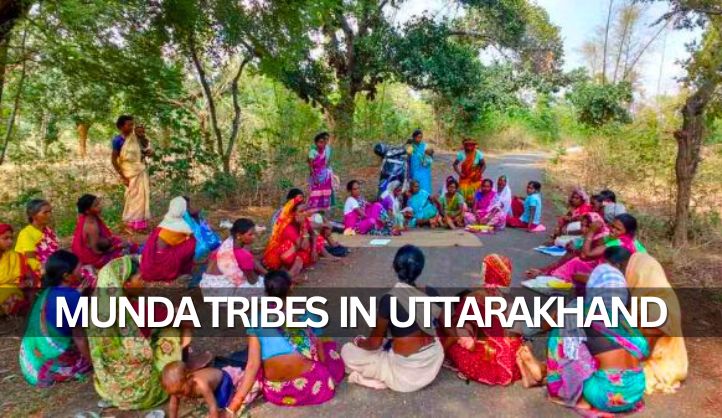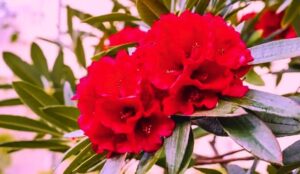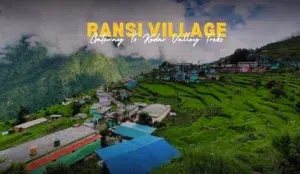The Munda tribe, a significant Adivasi group in India, is known for its rich cultural heritage and unique traditions. Have you ever wondered about the diverse tribal communities in India, especially in the northern regions like Uttarakhand? The Munda tribe, originally from the Chotanagpur Plateau, has a fascinating presence in Uttarakhand. This article explores their history, culture, and the challenges they face today.
Historical Background
The Munda tribe is one of the oldest tribes in India, with roots tracing back thousands of years. Historically, the Mundas were part of the Austroasiatic linguistic family and were predominantly found in the Chotanagpur Plateau region, which includes present-day Jharkhand, Bihar, Odisha, and parts of West Bengal. Their migration to Uttarakhand is a relatively recent phenomenon, spurred by economic opportunities and the need for new livelihoods.
Migration to Uttarakhand
The migration of the Munda tribe to Uttarakhand can be traced back to the colonial period when many were brought as laborers to work in tea plantations and other industries. Over time, they settled in various parts of the state, including Dehradun, Nainital, and other regions. This migration led to the blending of their traditional customs with local cultures, creating a unique cultural tapestry.
Cultural Practices and Traditions
The Munda tribe is known for its rich cultural traditions, which are deeply rooted in their connection to nature and ancestral heritage. Their customs and rituals are often centered around agriculture, community bonding, and spiritual practices.
Traditional Attire and Jewelry
Munda women are known for wearing traditional sarees, often adorned with bright colors and intricate patterns. They also wear unique jewelry, including necklaces, bangles, and earrings made from silver, beads, and other materials. Men typically wear dhotis and kurtas, maintaining a simple yet dignified appearance.
Dance and Music
Dance and music play a crucial role in Munda culture. The tribe is famous for its folk dances like “Karma” and “Jhumar,” performed during festivals and special occasions. These dances are accompanied by traditional instruments such as the “Mandar” (a type of drum) and the “Nagara” (a large drum), which create a rhythmic and vibrant atmosphere.
Language and Literature
The Munda people primarily speak the Mundari language, a member of the Munda subgroup of the Austroasiatic languages. This language is distinct and has its script, known as Ol Chiki, created by the revered Munda scholar Pandit Raghunath Murmu.
Preservation of Language
In Uttarakhand, the preservation of the Mundari language faces challenges due to the influence of Hindi and other dominant languages. However, efforts are being made by community leaders and cultural organizations to preserve and promote the language, especially among the younger generation.
Traditional Occupations and Economy
The traditional occupations of the Munda tribe revolve around agriculture, animal husbandry, and forest-based livelihoods. They are skilled farmers, cultivating crops like rice, maize, and pulses. The tribe also engages in hunting, fishing, and gathering forest products, which are integral to their sustenance and cultural practices.
Handicrafts and Art
The Munda people are known for their craftsmanship, particularly in making bamboo and wooden crafts, weaving, and pottery. These handicrafts not only serve as a source of income but also as a means of preserving their cultural heritage. Many Munda artisans create beautiful items such as baskets, mats, and decorative pieces that reflect their traditional artistry.
The Munda Lifestyle: Daily Life and Social Structure
The Munda community is organized into clans, each with its own distinct identity and social customs. The clan system plays a significant role in their social structure, influencing marriage, festivals, and other communal activities.
Community Living
The Munda people traditionally live in village communities, known as “tolas,” where they practice communal living. Each village has a headman, known as the “Munda,” who acts as a leader and mediator in disputes. The village council, or “Parha,” plays a crucial role in decision-making and maintaining social harmony.
Gender Roles and Family Life
Gender roles in the Munda community are traditionally defined, with men primarily involved in farming and hunting, while women take care of household chores, child-rearing, and handicrafts. However, there is a strong sense of gender equality, with women actively participating in community affairs and decision-making processes.
Festivals and Celebrations
Festivals are an integral part of Munda culture, reflecting their deep spiritual beliefs and connection to nature. The festivals are marked by elaborate rituals, feasting, music, and dance.
Sarhul Festival
One of the most significant festivals for the Munda tribe is “Sarhul,” celebrated in the spring. This festival marks the flowering of the Sal tree and is dedicated to the worship of nature and ancestors. During Sarhul, the Munda people offer flowers, fruits, and grains to their deities and ancestors, seeking blessings for a good harvest and prosperity.
Karam Festival
Another important festival is “Karam,” celebrated in honor of the Karam tree. This festival involves rituals, songs, and dances performed around the Karam tree, symbolizing the tribe’s connection to nature and their reverence for the environment.
The Challenges Faced by the Munda Tribe
Despite their rich cultural heritage, the Munda tribe faces several challenges in modern times. These challenges include issues related to land rights, economic opportunities, education, and cultural preservation.
Land and Livelihood Issues
Land rights remain a critical issue for the Munda tribe, as many face displacement and loss of traditional lands due to industrialization and development projects. This has led to a loss of livelihood and cultural disintegration for many Munda families.
Education and Healthcare
Access to education and healthcare is limited for the Munda tribe, especially in rural areas. Efforts are being made by the government and NGOs to improve these services, but there is still a long way to go in ensuring equal opportunities and access for all members of the community.
Modern Influence and Adaptation
In recent years, the Munda tribe has experienced significant changes due to modernization and globalization. While some aspects of their traditional lifestyle have been retained, there is also a noticeable shift towards modern ways of living.
Integration with Mainstream Society
The younger generation of the Munda tribe is increasingly integrating with mainstream society, pursuing education and employment opportunities in urban areas. This integration has led to a blending of traditional and modern practices, creating a unique cultural fusion.
Preservation Efforts
Efforts are being made by cultural organizations and community leaders to preserve Munda traditions and promote their cultural identity. These efforts include documenting and teaching the Mundari language, preserving traditional music and dance, and promoting Munda handicrafts and art.
Other Tribes of Uttarakhand
Uttarakhand, with its diverse geography and rich cultural tapestry, is home to several indigenous tribes, each with unique traditions and ways of life. Here’s an overview of some of the prominent tribes of Uttarakhand:
1. Tharu Tribe
- The Tharu are known for their rich folklore, dance, and music.
- They practice agriculture, particularly rice cultivation, and are skilled in traditional crafts.
- Festivals like Holi and Tihar are celebrated with distinctive rituals and performances.
- Traditionally, the Tharu live in small, self-sustaining villages with homes made from mud and thatch.
- They have a close relationship with the forest and wildlife, often using traditional knowledge for medicinal and agricultural purposes.
2. Buksas Tribe
- The Buksa tribe has a vibrant cultural heritage with traditional music, dance, and rituals.
- They are known for their colorful attire and intricate beadwork.
- The Buksa people practice agriculture, focusing on crops like rice, maize, and vegetables.
- Their traditional homes are made from locally available materials, designed to suit the region’s climate.
3. Rathia Tribe
- The Rathia tribe is known for their unique traditional customs, including folk dances and songs.
- Their festivals often include community feasts and ceremonies that reflect their deep connection to nature.
- The Rathia people engage in agriculture and animal husbandry.
- Their homes are typically made from locally sourced materials, reflecting their integration with the environment.
4. Jaunsari Tribe
- The Jaunsari tribe has a rich folk music, dance, and storytelling tradition.
- They celebrate festivals such as Magh Mela with traditional ceremonies and community gatherings.
- The Jaunsari people practice subsistence agriculture, growing crops like barley, maize, and potatoes.
- Their homes are designed to withstand the cold climate of the region and are often built using stone and wood
Conclusion
The Munda tribe of Uttarakhand, with its rich cultural heritage and vibrant traditions, continues to be an important part of the region’s cultural landscape. While they face challenges in preserving their identity and way of life, the resilience and adaptability of the Munda people offer hope for the future. By embracing both traditional and modern practices, the Munda tribe can continue to thrive and contribute to the diverse cultural tapestry of India.
FAQs about the Munda Tribe
Who is the Munda tribe?
The Munda tribe is an Adivasi community with origins in the Chotanagpur Plateau region. They are known for their rich cultural heritage and traditions.
Where can the Munda tribe be found in Uttarakhand?
The Munda tribe can be found in various parts of Uttarakhand, including Dehradun and Nainital.
What language do the Munda people speak?
The Munda people primarily speak the Mundari language, which is part of the Austroasiatic language family.
What are some traditional Munda festivals?
Some traditional Munda festivals include Sarhul and Karam, which celebrate nature and the environment.
What challenges do the Munda tribe face today?
The Munda tribe faces challenges related to land rights, education, healthcare, and cultural preservation.
How are efforts being made to preserve Munda culture?
Efforts to preserve Munda culture include promoting the Mundari language, preserving traditional music and dance, and supporting Munda handicrafts and art.





